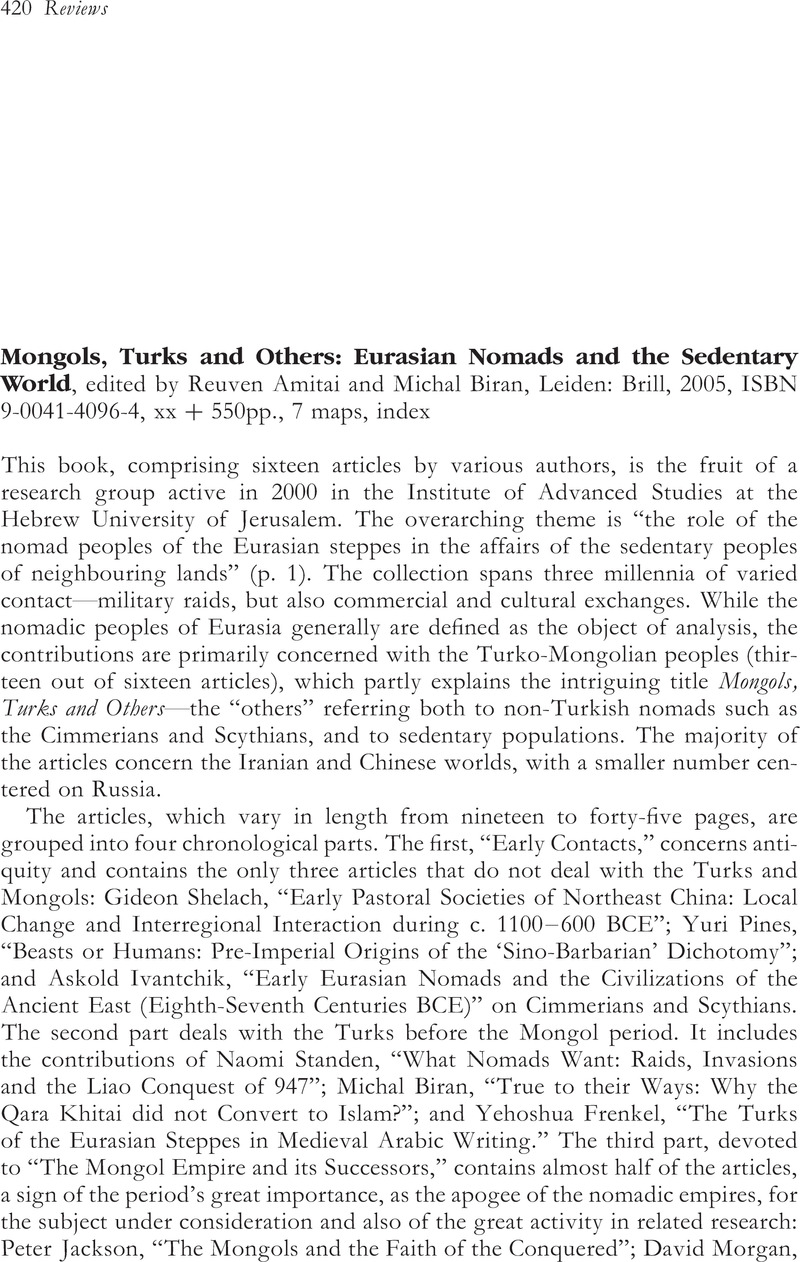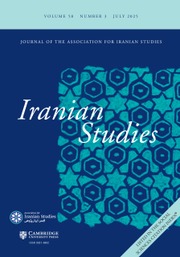No CrossRef data available.
Article contents
Mongols, Turks and Others: Eurasian Nomads and the Sedentary World, edited by Reuven Amitai and Michal Biran, Leiden: Brill, 2005, ISBN 9-0041-4096-4, xx + 550pp., 7 maps, index
Published online by Cambridge University Press: 01 January 2022
Abstract

- Type
- Reviews
- Information
- Copyright
- Copyright © David Durand-Guédy 2010
References
2 See Biran, Michal, The Empire of the Qara Khitai in Eurasian History: Between China and the Islamic World (Cambridge: Cambridge University Press, 2008), esp pp. 196–201.Google Scholar
3 Miquel, André, La géographie humaine du monde musulman (jusqu'au milieu du 11e siècle), vol. I (Paris and La Haye, 1967).Google Scholar See also Miquel, André, “Comment lire la littérature géographique arabe du Moyen-Age?,” Cahiers de Civilisation médiévale, 15, no. 2 (1972) : 97–104.CrossRefGoogle Scholar
4 Miquel, André, Géographie humaine, vol. II (La Haye, 1975), 268ff.Google Scholar
5 See Jürgen Paul, Herrscher, Gemeinwesen, Vermittler: Ostiran und Transoxanien in vormongolischer Zeit (Stuttgart, 1996), 93–139.Google Scholar See also my article on Isfahan, Saljuq, Durand-Guédy, David, “Iranians at War under Turkish Domination: the Example of Pre-Mongol Isfahan,” Iranian Studies, 38, no. 4 (2005): 587–606.Google Scholar


